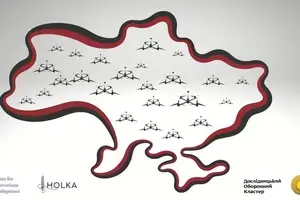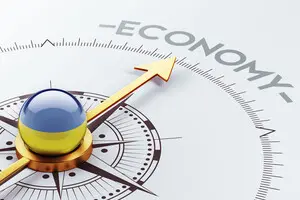Ukraine Must Look for New Revenues. Cutting Expenditures Will Not Save Us
Ukraine must seek additional, preferably rent-based, sources of income to finance its expenses: natural resources, logistics, energy, transport. Ukraine has a wealth of any kind of revenue source as a plus to those we already have. Otherwise, our country is unlikely to cope with the challenges.
It is worth noting that the strategy of saving on expenses, although it looks attractive, like a party slogan in the elections, will definitely not give the desired effect. Objectively, it must be said that apart from corruption rent, we have nothing to cut in our country's expenses. And it is difficult for our country to earn more, because for this we need to have a young and economically active population, and not a country where only "old people and children" are present.
Judge for yourself, before the war, the demographic structure of Ukraine looked like this: people over 64 years old - 17.4%, aged 15 to 64 - 67.4, under 15 years old - 15.2%. It is worth emphasizing the fact that the key demographic potential of Ukraine was developed in the second half of the 20th century, and since then we have simply had a big gap.
Thus, after the war, we can predict the following demographic structure in Ukraine:
- over 64 years old - 40%;
- from 15 to 64 years old - 48%;
- up to 15 years old — 12%.
That is, elderly people and children will make up more than 50% of the population with a significant imbalance in the direction of the older generation. It is important to say that such a trend with an imbalance in a certain direction has consequences for such social things as pensions, medicine, education. And therefore, this will lead to state spending on these areas at the level of at least 15% of the Gross domestic product (GDP).
In addition, it is also worth mentioning the fact that Ukraine will spend after the war at least 5% on defense and at least 2–3% of the Gross domestic product on veterans and other privileged groups of the population (orphans, Internally Displaced Persons (IDPs), etc.). In addition, it is important to mention that at least 5% of the Gross domestic product will have to be spent on restoring the infrastructure destroyed during the war.
That is, even without the cost of public administration, we are talking about spending at least 28% of the Gross domestic product in the form of public expenditures.
Taking into account the costs of subsidies, public administration, science, this figure will increase to 30% of the Gross domestic product.
But Argentina is doing well! Why shouldn't our country also follow the path of reforms of their president Javier Milei?
Well, let's try to assess the feasibility of such a "copying" of their development strategy.
Speaking on this topic, it must be said that Argentina and pre-war Ukraine really have similarities.
Such a thing as the "raw material curse" accompanies both countries. However, it is worth saying that everyone had their own intermediate finale: Argentina at the peak of its development in 2017 reached the Gross domestic product of $ 641 billion. and this is still a historical record, and Ukraine in 2021 reached the maximum Gross domestic product level of $ 200 billion.
At the same time, the countries have comparable human potential: the population of Argentina is 46 million (but, unlike Ukraine, its number is growing linearly). And in Ukraine before the war, 43.8 million (although according to the second all-Ukrainian census, the Minister of the Cabinet of Ministers Dmytro Dubilet, the population of our country was about 37 million).
It should also be added that, according to the parameters of its national economy, Argentina was accepted into the club of the 20 most developed countries in the world - the G20 and even held a summit of this organization in Buenos Aires. And Ukraine "got" into the G20 only, I don't even want to mention it, under Viktor Yanukovych's program "Ukraine-2020" (i.e. joining the G20 no later than 2020).
Are Javier Milei's reforms really that successful?
Strange as it may seem, it is worth noting that Javier Milei's reforms are in some way reminiscent of the action programs of all our governments after 2014, or rather, the memorandums of Ukraine with the International Monetary Fund (IMF).
By the way, the one with whom the International Monetary Fund (IMF) will have no problems with agreeing on the terms of lending is Javier Milei. After all, everything he does corresponds to the economic mainstream ideas of the fund.
Speaking about this, it is necessary to emphasize the fact that Javier Milei adheres to the reduction of social spending (science, education, medicine), the reduction of the budget deficit, the liberalization of imports and the reduction of state spending on infrastructure. In addition, he also adheres in his political decisions and actions to the trend of increasing utility tariffs, increasing the raw material specialization of the economy, and mass privatization. It should be noted that the International Monetary Fund (IMF) requires the same actions and decisions.
The Central Bank of Argentina has published a medium-term forecast. The Argentine peso will devalue: from January's 1042 pesos per dollar to 1205 pesos at the end of 2025, or by 18.1%. It must be said that inflation will be 25.9% in 2025 (last year it was over 120%). In 2026, inflation will decrease to 15.3%, and in 2027 - to 10%.
In general, despite the budget restriction, there will be no low inflation in Argentina yet, but there will certainly be a slowdown in price dynamics from a catastrophic 220% (on the eve of Javier Milei's victory in the elections).
In addition, it should be noted that the forecasts for the gross domestic product growth for the current year differ: from 4.5% (a broad survey of enterprises) to 3.8% (a survey of top 10 enterprises). After a 4–5% drop in the gross domestic product in 2024, this can be called a recovery, not growth.
In 2026–2027, the indicators of the Gross domestic product are more modest: 3.7% and a slowdown to 3% in the end.
It must be said that this is a rather telling fact: Javier Milei's libertarian model does not predict high growth dynamics of the gross domestic product at the level of 8–10%. In the libertarian paradigm, this is impossible. That is why this development model is suitable for very rich countries, where 60–70% of the population are people with high incomes. But it is important to emphasize the fact that such a development model is not suitable for poor countries, where 50% and above are poor.
That is, Javier Milei's libertarian model cannot quickly overcome poverty, social injustice and inequality in society. He does not set such a goal, moreover, social inequality is perceived as a natural result of entrepreneurial separation. Thus, it is worth noting that poverty in the libertarian system is part of the economic equation, a background for highlighting the success of the rich.
At the same time, the maximum increase in raw material exports and the inhibition of consumer demand produce results in the form of an improvement in the country's trade balance. Thus, in 2025, the country's exports will amount to $ 83 billion, imports - $ 68 billion, trade surplus - $ 15 billion (and this is the first time in recent years).
It should be noted that the slowdown in the devaluation of the peso also contributes to the inhibition of inflation. According to the well-known formula of internal balances, a state budget surplus (first achieved during Javier Milei's time in government) automatically leads to a trade balance surplus, that is, an excess of exports over imports.
How does it work?
This formula works in such a way that government spending is sharply reduced, primarily social spending and infrastructure spending. This is what gives the state budget surplus. When the population has less money, they buy fewer imported goods. When business has less money, its representatives slow down capital investments and reduce technological imports. Although imports may increase in absolute terms, the question here is in the dynamics. As a result, Argentina also receives a foreign trade surplus.
In 2024, the following structure was observed in Argentina's exports:
- mechanical engineering products - 37.2%;
- processed agricultural products - 28%;
- raw materials - 23%;
- energy - 12.1%.
From the products of agro-processing, the leaders are flour and soybean oil granules - a total of 13.2%. From agricultural raw materials - corn with 9%. From the products of primary redistribution: crude petroleum oils, crude soybean oil - a total of 7%.
It is worth noting the fact that in the future, the share of agricultural raw materials in the structure of Argentina's exports will increase, and mechanical engineering will fall. As in Ukraine since 2005. In general, a decrease in the level of economic complexity in Argentina, as in Ukraine, is more than likely.
However, there are also important differences between the countries
Argentina does not have a neighbour who wants to take possession of its territories, so there will be no war there. In addition, it must be said that many of Argentina's neighbours live with an even worse standard of living than it, therefore, there will be no permanent negative factor in comparing regional living standards, which will provide a more positive background for Javier Milei's reforms: Argentina will definitely not become the poorest country in Latin America (like Ukraine in Europe).
There is no thriving labor market next to Argentina, so there will be no significant labor migration. After all, Argentines will definitely not go to Brazil, and the United States of America is quite far away.
Good prospects for agricultural raw material prices in the coming years will allow the “Dutch disease” to develop secretly, when the rapid growth of the raw material sector makes it possible to hide and remain silent about deindustrialization for a certain time. In addition, it is worth noting that at the same time this approach to doing business gives an incentive to the growth of the service sector.
Apart from that, it should be said that Argentina practically does not need to develop the army and military-industrial complex, and it has its own energy resources. It is worth mentioning that such an approach will save internal resources. On the other hand, as befits the “Dutch disease”, any collapse in prices for agricultural raw materials on world markets will also collapse the Milley reforms: it will no longer have an internal stabilizer in the form of industry and solvent demand and consumption.
There are a number of examples in Javier Milei's reforms that can be successfully used in Ukraine.
First of all, we can use the program for legalizing capital. Here our country will definitely achieve undoubted success.
In total, $ 32 billion was legalized within the framework of this program. It is even inconvenient to compare this program with the Hetmantsev legalization program for UAH 2 billion.
It should be emphasized that Argentine citizens have more than $ 276 billion in accounts abroad, and if we take legal entities, then $ 455 billion. That is, approximately 10% of the withdrawn amounts were legalized. The legalization program itself is carried out in three stages with tax rates of 5, 10 and 15%, respectively. Thus, in the first stage, 20 billion dollars were attracted, in the second - 12 billion. Currently, the third stage is underway. It should be emphasized that the key element of success is a pause in financial monitoring. This needs to be done in Ukraine as well. After all, the political leaders in our country are constantly trying to equate standards of use of financial assets of local small economic units such as "The National Fair at Sorochyntsi" with the standards of Swiss banking system. It is important to say that Javier Milei is doing shock therapy in the system of social tariffs carefully, not as clumsily as it was done in our country before the war. For example, the price of electricity for the population from February 2025 is being increased by as much as... 1.5%, and the price of gas - by 1.6%. And it is worth noting that this is despite the fact that there is inflation of over 100%, although for a year. Subsidies in Argentina are being reduced, but not sharply.
There is also a cautious reduction in export duties on agricultural raw materials (soybeans, rapeseed, corn, oil) - from 25-35% to 15-25%. This process slows down the process of deindustrialization.
In essence, Javier Milei is successfully taking advantage of the fact that Argentina has an educated population, good infrastructure and developed industry. And the main important and decisive factor for success is that Argentina has a different demographic structure. Currently, 63.6% of the population in the country are people aged 15 to 64, the elderly are a little more than 10%, and children are 25.4%. With such a distribution, it is worth agreeing that it is much more comfortable to reduce expenses, as well as to be confident in what will happen in the future.
***
However, the most important conclusion that we must draw from the presented analysis is the futility of implementing reform programs without proper analysis, without thinking about it at all, which are persistently offered to us by our partners, primarily the International Monetary Fund (IMF). It is worth noting that Javier Milei's reforms are a "start pack", that is, a minimum set to start something for any memorandum with the fund. Thus, on the example of Argentina, we see that these reforms work and give results, but only under certain conditions, which, unfortunately, have little in common with our reality.
The question arises: Does Ukraine have its own set of reforms, adapted to current realities and challenges? I have not heard of the existence of such a ...
Please select it with the mouse and press Ctrl+Enter or Submit a bug

















 Login with Google
Login with Google